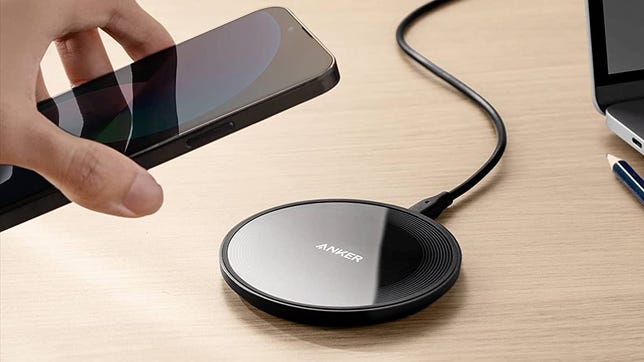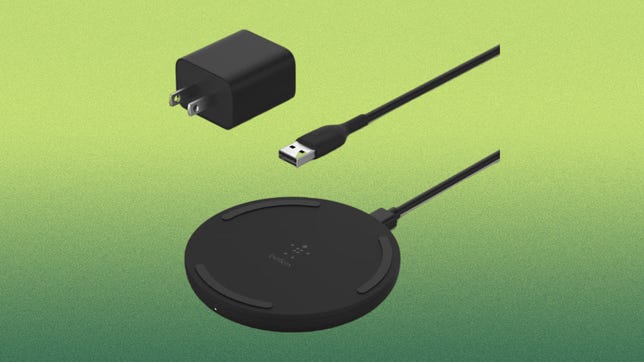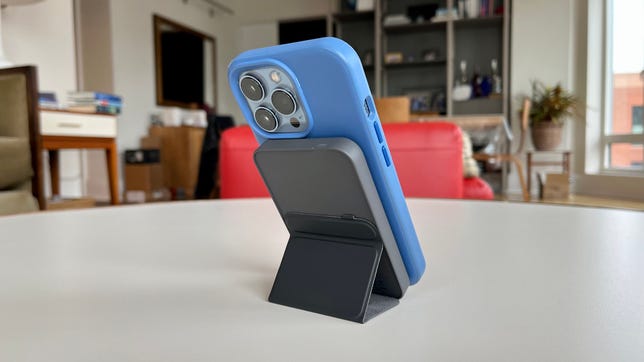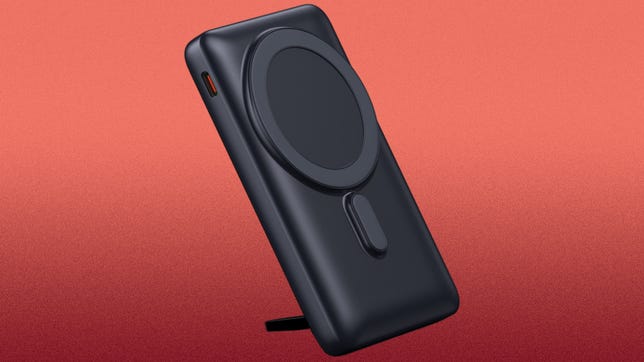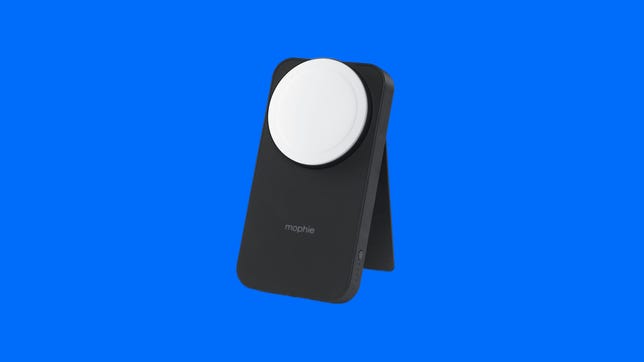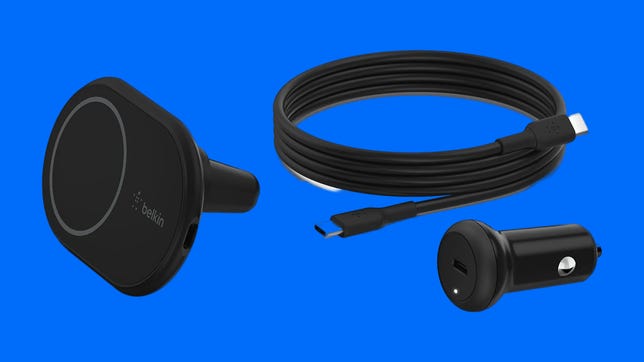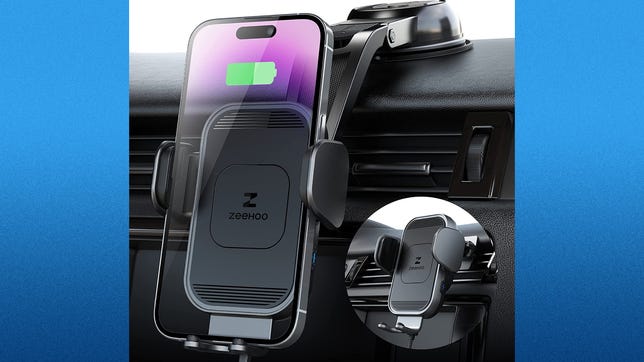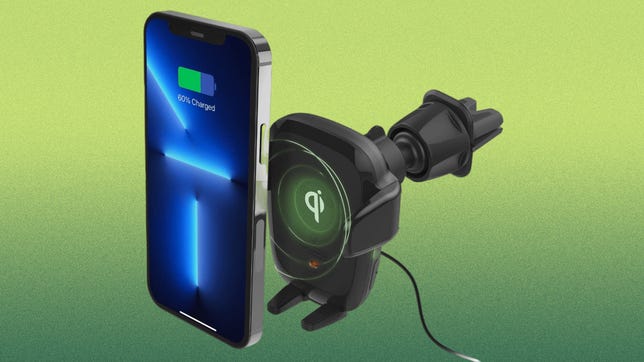Technologies
Best Wireless Charger for 2023
These are our top picks for the best wireless chargers in 2023 for phones, smartwatches and wireless earbuds.

Even though all new iPhones and many Android smartphones support wireless charging, they rarely ever come with a wireless charging pad. That means you have to buy a wireless charger to take advantage of the feature, which is probably why you’re here, looking for recommendations for the best wireless charging options.
You’ve come to the right place because we’ve tested a lot of wireless chargers, including Apple MagSafe wireless chargers as well as two- and three-in-one wireless charging docks and stations designed to charge multiple devices at the same time, including your Apple Watch and Apple’s AirPods and AirPods Pro (or any earbuds with a wireless charging case). We’ve even got some picks for the best portable wireless chargers and best wireless phone chargers for cars.
Note that all the wireless chargers on this list use Qi wireless charging technology. However, some also support Apple MagSafe magnetic wireless charging, though only certain MagSafe compatible wireless chargers are official Apple-certified MagSafe chargers that allow you to get the maximum 15-watt charging speed for iPhones.
All the products reviewed below have been tested by me or other CNET editors. We’ll add more of the best Qi wireless chargers to list as worthy candidates hit the market.
Best wireless chargers
Screenshot by David Carnoy/CNET
Over the years, Anker has sold a few different budget Qi wireless charging pads. There’s nothing terrible fancy about its 315 Wireless Charger, but it delivers up to 10-watt charging speeds for Android smartphones and 7.5-watt for iPhones and it does look fairly sleek with a slim design (it also has some grippy material on top so your phone doesn’t slide off).
It’s not a super fast charger, but it’s fine for those who charge their phones overnight. A USB-C cable is included, but you will need to supply a power adapter (you’ll want one that’s capable of delivering 10 watts or more to get the higher charging speeds).
Screenshot by David Carnoy/CNET
The latest version of Belkin’s wireless charging pad offers up to 15-watt fast charging (a power adapter and cable are included). Only certain Android phones are compatible with that 15-watt wireless charging speed, and the pad only charges iPhones at 7.5-watt speeds. It does have some rubber grips embedded into the slim puck to keep your phone from slipping of the pad.
David Carnoy/CNET
The Anker 637 has a magnetic charging pad on one side and seven charging ports on the back: two USB-C, two USB-A and three standard AC outlets. The USB-C ports deliver up to a 65-watt charge when charging one device — or 45- and 20-watt if charging two devices simultaneously. So yes, you can use it to charge most laptops that charge via USB-C.
For MagSafe-enabled iPhones, the wireless charging pad charges at 7.5 watts. You can only charge Android phones if you stick a metal ring accessory (sold separately) on the back of your device and place it in the right spot. Note that this model sometimes has a $30 clippable coupon on Amazon, driving the price down to $70.
Screenshot by David Carnoy/CNET
Available in black or white, the Belkin MagSafe 3-in-1 wireless charging stand (2nd gen) charges your MagSafe-enabled iPhone at 15 watts, the fastest wireless charging speed available for iPhones. This second-gen model also offers the faster charging speed for Apple Watches with the new fast-charging capabilities starting with the Watch Series 7 — that’s a key convenience upgrade. A third wireless charging spot is available for charging any AirPods with a wireless charging case.
Belkin also makes this is a three-in-one wireless charging pad version, but I prefer this design. Alas, three-in-one MagSafe wireless charging products tend to be expensive and this model is no exception.
David Carnoy/CNET
What’s cool about Anker’s 622 magnetic battery is that it’s a wireless battery that has an integrated magnetic flap that converts into a stand. You won’t get fast wireless charging from this 5,000-mAh battery (it charges at up to 7.5 watts) but it’s slim and easy to carry around.
It charges via USB-C and if you use a USB-C to Lightning to charge your iPhone, it will charge at a faster rate of 12 watts. That’s not as fast as what a 20-watt USB-C power adapter can deliver, but it’s faster than 7.5 watts.
David Carnoy/CNET
The Anker 633 MagGo is a two-in-one charging stand that allows you to charge your phone (with a magnetic case) and earbuds (with a wireless charging case) at the same time. The key bonus feature is that the package includes Anker’s 621 portable battery, which you can take on the go with you as a portable wireless charger. (It doesn’t have an integrated kickstand like the Anker 622 portable battery.)
Note that even though this only offers up to 7.5-watt wireless charging speeds for iPhones, this is primarily designed for MagSafe-enabled iPhones. You can also use this with Android devices, but the case for your device would need to have a magnetic component to stick to the charger. The stand and battery are also available in black and light blue.
A 25-watt power adapter is included so this will have no trouble charging your smartphone and AirPods at the same time. You can also purchase Anker’s 621 portable battery separately for $50 should the battery start to lose its charge over time.
Screenshot by David Carnoy/CNET
You can pick up Apple’s official MagSafe charger for around $40, or occasionally even $30 on sale. That said, this Belkin BoostCharge Pro charger pad costs a little more but has one key addition that makes it an attractive alternative: an integrated kickstand.
This is an official Made for MagSafe charger so it charges MagSafe-enabled iPhones at 15 watts, the fastest wireless charging speed available for iPhones. It’s available in black or white. Alas, like Apple’s MagSafe charger, it doesn’t come with a USB-C power adapter so you have to supply your own (20 watts or higher is recommended).
Screenshot by David Carnoy/CNET
If you’re looking for a three-in-one wireless charging station but don’t want to spend upwards of $100 for it, the Anker 335 foldable is a good option, though not necessarily the speediest charger. And you do have to supply your own Apple Watch charging puck to get your watch charged (there’s a holder for the puck).
An 18-watt Quick Charge 3.0 charger is included that will allow you to charge multiple devices at the same time (smartphone, Apple Watch and earbuds with wireless charging, for example) with a maximum wireless charging speed of 10 watts for smartphones (7.5 watts for iPhones). Its foldable design does make it suitable to pack for travel.
Screenshot by David Carnoy/CNET
If you’re looking for a bigger portable battery that charges your phone wirelessly, the Baseus Magnetic Wireless Power Bank is an excellent option. It houses a 10,000-mAh battery that can charge an iPhone 14 around two times — but it’s still somewhat compact.
The magnet is strong, and I also liked that it has an integrated flip-out kickstand, so it converts into a stand. There’s also an LED battery life indicator on back of the battery that tells you exactly how much juice the battery has left (you see the actual percentage). The Baseus Magnetic Wireless Power Bank is available in three color options with the black version currently costing a few bucks less.
Screenshot by David Carnoy/CNET
The Anker PowerWave 2 offers stand offers up to 15-watt charging speeds for Android devices that support fast wireless charging. The speed will dip for Android devices that only support up to 10-watt charging speeds and 7.5 watts for iPhones. You can prop your phone up horizontally or vertically in the charger. (Landscape mode is obviously good for watching movies or playing video games with an external game controller.) A power adapter is included.
Screenshot by David Carnoy/CNET
Mophie’s Powerstation Wireless Stand with MagSafe is currently only sold through Zagg (Mophie’s parent company) and Apple. It’s not cheap, but the versatile 10,000-mAh battery has both a stand and MagSafe charger built in also has a threaded tripod mount at the bottom.
Since this is an official MagSafe charger, the battery charges compatible iPhones at 15 watts, making this among the fastest wireless external battery chargers out there. It will also charge the AirPods 3 and AirPods Pro models with MagSafe. If you use a USB-C-to-Lightning cable (not included) with it, you can charge at 20-watt speeds. You can also charge two devices at the same time.
Note that first-time buyers at Zagg can get a 20% off discount by supplying their email address.
Other wireless chargers we tested
Screenshot by David Carnoy/CNET
Moshi makes some nice wireless charging products, including its Lounge Q Wireless charger stand that has «adjustable rails that let you position the charger to accommodate any device size for optimal efficiency.» It’s been out a while but is still one of the more attractive wireless chargers out there and can charge at up to 15-watt speeds for compatible Android devices. (iPhone speeds top out at 7.5 watts.)
I found that it charged phones with thicker cases on them. I also liked how I could adjust the stand to accommodate my phone for landscape or portrait viewing. Alas, this wireless charging stand is expensive and doesn’t include a power adapter.
Screenshot by David Carnoy/CNET
Belkin makes a MagSafe car-vent mount that costs around $40, as well as the BoostCharge Pro ($100), which is Apple-certified and wirelessly charges iPhones at up to 15 watts. And while this model — the Belkin BoostCharge Magnetic Wireless Car Charger — only charges iPhones at at up to 10 watts, it’s more affordable at around $60. Its USB-C cable is removable (it’s integrated on BoostCharge Pro) and you get a 20-watt cigarette-lighter power adapter. I personally like a car power adapter with two USB-C ports so a passenger can plug in a cable and also charge his or her phone, but you can always opt to add that later.
Screenshot by David Carnoy/CNET
If you don’t mind going with a no-name brand like ZeeHoo, its wireless car charger has most of the features you want for phone charging, including autoclamping, a secure suction cup that can be installed on your car’s air vent, windshield or dashboard. It has USB-C and up to 15-watt fast charging for Android phones that support it (iPhones are capped at 7.5-watt charging). This upgraded version has a sleeker design than the original and it costs about $20 less than the iOttie. However, this wireless charger doesn’t come with a cigarette lighter adapter — only a USB-C cable. Note that to get fast charging, you’ll need a power adapter that supports it.
This wireless car mount charger is one of the more popular generic wireless car chargers with an autosensing telescopic arm, and the original version I tried worked well overall, attaching securely to my car vent mount and giving my smartphone or Qi-enabled device a quick charge.
Screenshot by David Carnoy/CNET
iOttie’s «autosense» automatic clamping wireless car charger with a phone mount is one of the best out there. While it’s pricey, we’ve seen some nice discounts on it recently. The Auto Sense Automatic Clamping Qi Charging Car Phone Mount is available in a dashboard mount version or a CD, cup holder and vent clip version (I tried the dashboard wireless charging mount). This wireless car charger mount has a nicely designed telescoping arm, a strong suction cup, and the wireless charging mount feature is compatible with most phone cases. You get 7.5-watt charging for an iPhone and 10-watt charging for Android phones, which is considered fast wireless charging.
This Qi wireless charger comes with a dual charging USB cigarette lighter adapter. My only gripe — and it’s a small one — is that the included cable is Micro-USB and not USB Type-C. Once this Qi charger is plugged into the wireless car charging mount you can basically forget about it, but if the cable accidentally becomes unplugged (which does happen), it’s easier to plug in a USB-C cable for phone charging, especially when you’re driving.
Wireless charger FAQs
Does my phone support wireless charging?
Starting with the iPhone 8, all new iPhones feature wireless charging, though only the iPhone 12, iPhone 13 and iPhone 14 series models have Apple’s MagSafe feature that allows for faster charging with Apple-certified MagSafe chargers.
Many but not all new Android smartphones, particularly more premium models, also support Qi wireless charging (top wireless charging speeds vary from Android smartphone to smartphone with 15-watt wireless charging currently being the fastest available). It’s easy confirm whether your phone supports wireless charging: Just consult the CNET review, or check out the specs on the manufacturers’ websites.
What is the best Qi wireless charger?
Virtually all wireless chargers uses Qi wireless charging technology, which has become the de facto standard for wireless charging. So all the wireless chargers on this list should also be considered the best Qi wireless chargers.
Can I use a wireless charger with a phone case?
Yes, you can — as long as your case isn’t too thick. But the majority of phone cases today are compatible with wireless charging. For iPhone users, any MagSafe-enabled case will definitely work for wireless charging.
What is considered fast wireless charging?
Fast wireless charging starts at 10 watts with current maximum speeds hitting 15 watts for certain Android smartphones and Apple-certified MagSafe chargers that tend to cost more. Many standard wireless chargers top our at 7.5 watts for iPhones. Note that you will need a wireless charger that is capable of fast charging and an AC adapter with enough power (we recommend 20 watts or more) to achieve fast charging.
Is wireless charging safe for my device?
Yes. But ideally you should use a wireless charger from a reputable brand to ensure best results. Sometimes your phone may heat up a bit while charging. You should only start to get concerned if it truly gets hot (remove your device from the charger if it does get hot).
Which is the fastest wireless charger available?
While phones like the Galaxy S23 and OnePlus 11 now offer much-improved wireless charging (at 45 or 80 watts, respectively), the fastest wireless chargers still top out at 15-watt charging speeds. To get that speed you’ll need a smartphone paired with a compatible charger — and as we’ve noted above, Android phones are generally more compatible with higher-speed chargers than iPhones, which require MagSafe-certified chargers.
What is the best wireless charger for iPhone?
The best wireless chargers for iPhone are official Apple-certified MagSafe wireless chargers because they offer the top wireless charging speeds (15 watts). But they tend to be significantly more expensive.
How we chose chargers to test
In an effort to find the best wireless chargers, we choose to look at a wide range of products from top manufacturers of wireless chargers, which includes companies like Anker, Belkin and Mophie. We also look at value options from less known brands that make wireless chargers.
How we test wireless chargers
We test wireless chargers with a primary focus on design, features and performance.
We judge design based on aesthetics and how easy it is to find a sweet spot for wireless charging (if you place your phone on a pad or on a stand, does it automatically start charging or do you have to adjust its placement?).
We judge features based on what extra features a pad, stand or wireless charging station might. This includes how many devices it can charge at the same time, is a power adapter included, does have a magnetic element (and how strong the magnets are) and does it have additional wired charging options (a USB-C out port).
For performance we mainly look at whether a wireless charger can deliver the wireless charging speeds it promises, especially 15-watt fast charging speeds. We also test whether a wireless charger can charge smartphones with thicker cases on them.
Technologies
Adorn Your Wrist With a 45mm Pixel Watch 3 for Just $200 This Black Friday
Both Amazon and Walmart are selling Google’s Pixel Watch 3 for just $200, but for how long?
There are tons of reasons to pick up a new smartwatch, not the least of which is monitoring your health and tracking your fitness goals. If you’re in the Android world, there are plenty of options to choose from right now. The Pixel Watch 3 is a solid choice, and it was our favorite Android smartwatch until the new Pixel Watch 4 took its place in the lineup. But the Watch 3 still boasts some great features that can help you stay on top of your wellness goals into the new year as well. And both Amazon and Walmart are running Black Friday deals that make it significantly cheaper than the Pixel Watch 4.
Both retailers are selling the bigger 45mm model with a solid $100 discount, so you can pick one up for just $200. That’s $100 less than the Pixel Watch 4’s Black Friday price. Again, this offer is available at both Walmart and Amazon, so take your pick as to where you place your order. Just do it soon because we don’t know how long these Black Friday deals will last.
The impressive watch was previously our top Android smartwatch because of its attractive design, large screen and speedy charging. It no longer requires a Fitbit Premium membership to access your readiness score, and it has plenty of great tools for runners. However, although the watch comes with Google Assistant, it doesn’t include Gemini, Google’s AI.
Lisa Eadicicco, a former senior editor, said in her CNET review, «The Pixel Watch 3’s upgrades are enough to keep it as my top pick for a general-purpose Android smartwatch. If you’re anything like me and consider yourself a casual runner in need of a general-purpose Android watch that’s sleek and comfortable, the Pixel Watch 3 won’t disappoint.»
If this isn’t the Pixel Watch for you, take a look at our full roundup on the best Pixel Watch deals going on right now.
SMARTWATCH DEALS OF THE WEEK
-
$339 (save $60)
-
$280 (save $70)
-
$300 (save $50)
-
$150 (save $100)
-
$49 (save $30)
Why this deal matters
Google Watches don’t go on sale often. These rare discounts on the Pixel Watch 3 are thanks to the release of the Pixel Watch 4 earlier this year. This deal drops the 45mm model to just $200 — a new all-time low, and a strong value for one of the most versatile Android smartwatches available.
Don’t miss any of our unbiased tech content and lab-based reviews. Add CNET as a preferred Google source.
Join Our Daily Deals Text Group!
Get hand-picked deals from CNET shopping experts straight to your phone.
By signing up, you confirm you are 16+ and agree to receive recurring marketing messages at the phone number provided. Consent is not a condition of purchase. Reply STOP to unsubscribe. Msg & data rates may apply. View our Privacy Policy and Terms of Use.
Technologies
I Regularly Buy Belkin Gear at Full Price, but You Can Save Up to 63% for Black Friday
Belkin makes excellent mobile accessories, from cables to wireless charging stands. Snag some of our favorites for less this Black Friday.
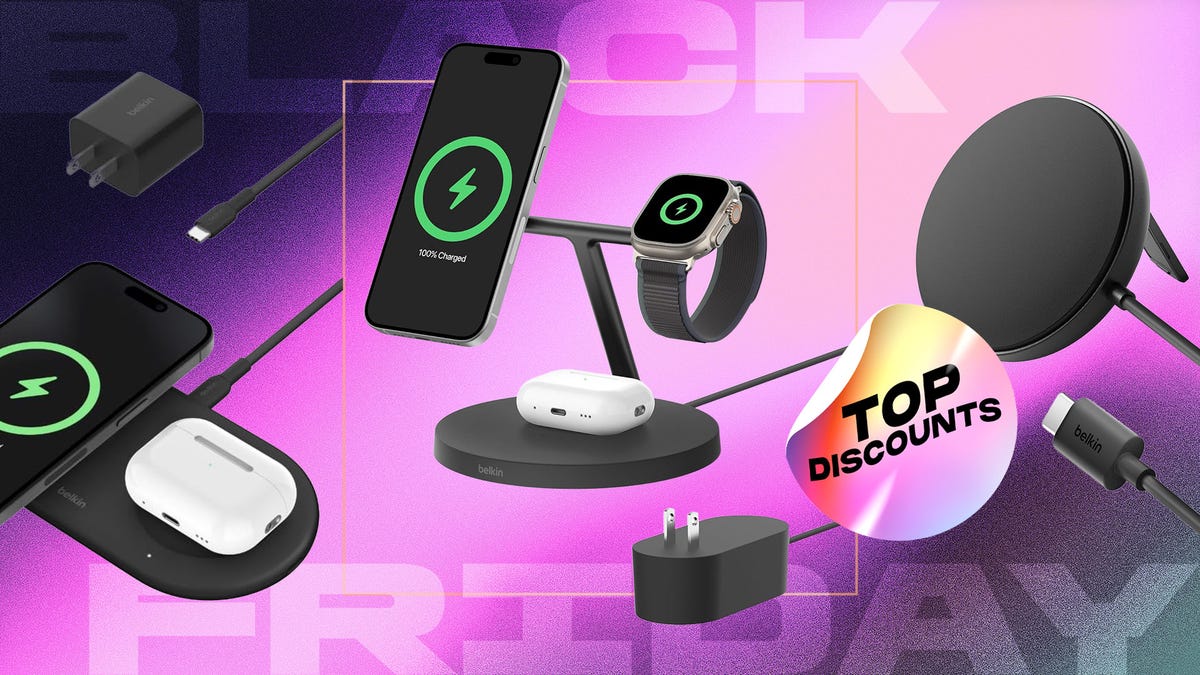
You can never have too many charging options, especially when you can stock up during an epic sale. We’re just hours away from Black Friday, and Belkin is offering up to 65% off its mobile accessories at Amazon. Belkin regularly shows up in our best lists, including our roundup of top wireless chargers.
The brand makes excellent gear at reasonable prices, and those prices just got even lower. Whether you’re looking for a charging station for your nightstand or a sleek power bank for travel days, there’s a Belkin Black Friday deal for you.
The Belkin MagSafe three-in-one wireless charging stand landed on our list of best wireless chargers for its impressive fast-charging performance. Our expert, David Carnoy, praised the stand’s convenient design and its ability to fast charge Apple’s entire ecosystem. That means you’ll be able to charge your iPhone, Apple Watch and any AirPods with a wireless charging case — all at once. Carnoy’s only complaint was the price; however, it’s substantially discounted for Black Friday. Belkin’s MagSafe three-in-one wireless charging stand is now just $78 — 35% off the usual $120 price.
If you spend a lot of time in your car, be it a long commute or regular road trips, a good car mount is a must. The Belkin MagSafe car mount is another one of our favorite accessories. The magnets provide a strong, secure hold for your phone, and you can rotate it for easy access. The mount plus charger is currently available for $55, down from $80.
Speaking of road trips, if you’re traveling this holiday season, you definitely need a portable power bank. Belkin has a 10,000 mAh power bank with a built-in USB-C power delivery cable for $15. This 20-watt charger typically retails for $40, so you’re saving 63%. There are four colors, but this price only applies to the black model. Other colors are available for $30.
If you’ve got a Nintendo Switch 2 or you’re gifting it to a loved one, you’ll love Belkin’s Switch 2 travel case. It’s lightweight with a hard shell and has storage pockets for up to 12 game cards. Snag one right now for $22. Just make sure you click the on-page coupon to get the full discount.
Belkin also has huge discounts on headphones and earbuds if those are on your gift list this year.
Why this deal matters
Phone accessories, including chargers and earbuds, can wear quickly and are easy to lose. Third-party retailers like Belkin offer a solid selection of mobile accessories for all budgets. This Black Friday deal makes now an excellent time to shop with up to 63% off top-rated charging stations, car mounts and even headphones.
Join Our Daily Deals Text Group!
Get hand-picked deals from CNET shopping experts straight to your phone.
By signing up, you confirm you are 16+ and agree to receive recurring marketing messages at the phone number provided. Consent is not a condition of purchase. Reply STOP to unsubscribe. Msg & data rates may apply. View our Privacy Policy and Terms of Use.
Technologies
The Black Friday Gaming Deals You Want Are Already Here, Including PlayStation, Xbox and Alienware
-

 Technologies3 года ago
Technologies3 года agoTech Companies Need to Be Held Accountable for Security, Experts Say
-

 Technologies3 года ago
Technologies3 года agoBest Handheld Game Console in 2023
-

 Technologies3 года ago
Technologies3 года agoTighten Up Your VR Game With the Best Head Straps for Quest 2
-

 Technologies4 года ago
Technologies4 года agoBlack Friday 2021: The best deals on TVs, headphones, kitchenware, and more
-

 Technologies4 года ago
Technologies4 года agoVerum, Wickr and Threema: next generation secured messengers
-

 Technologies4 года ago
Technologies4 года agoGoogle to require vaccinations as Silicon Valley rethinks return-to-office policies
-

 Technologies4 года ago
Technologies4 года agoOlivia Harlan Dekker for Verum Messenger
-

 Technologies4 года ago
Technologies4 года agoiPhone 13 event: How to watch Apple’s big announcement tomorrow

